Are you interested in soccer tactics, but have a hard time understanding them?
Join the club.
During a match, many fans want to know why the players are doing what they’re doing. Team A has obviously come up with a plan for beating Team B – but what is it?
It’s not usually easy to tell, for obvious reasons: soccer is a fast, free-flowing sport, so cause and effect are hard to separate. The oblique camera angle and partial view of the field don’t makes things any easier.
Sure, there are discussions of strategy out there. But they’re not much help. Articles on soccer tactics are typically riddled with off-putting jargon. And on television, there’s hardly any talk about tactics at all. That’s partly because broadcasters – understandably – would rather show goals at halftime and after the game.
But help is at hand. Over the past few months – and especially during Euro 2016 – I’ve started following a few amateur analysts on Twitter. They post short videos and photomontages highlighting interesting tactical aspects of play with brief comments explaining what’s going on.
The posts won’t be much use for newbies, but for serious fans, they illuminate a deeper level of the game in just 30 seconds, providing a powerful new lens for watching a match.
Could this be a blueprint for TV analysis in the near future?
Enter ‘The Analyst’s Eye’
As far as I know, the pioneer of Twitter postgame analysis is a Brit who posts as The Analyst’s Eye. He’d rather remain anonymous for now but is willing to divulge that he’s in his early 20s and working for a pro team in England. He does the videos in his spare time.
He’s been a minor sensation since surfacing on Twitter last August. His tactical videos – made in his bedroom at his parents’ place – immediately won him thousands of followers; the number currently stands at around 27,000. Media, coaches, and players have shown interest. All this for a project that started more or less by accident.
Watching Bayern Munich one night, The Analyst says, he saw manager Pep Guardiola get angry at midfielder Arturo Vidal. Reviewing the match later, he understood why Guardiola was upset. He made a video and posted it on Twitter late that night. Then he went to bed.
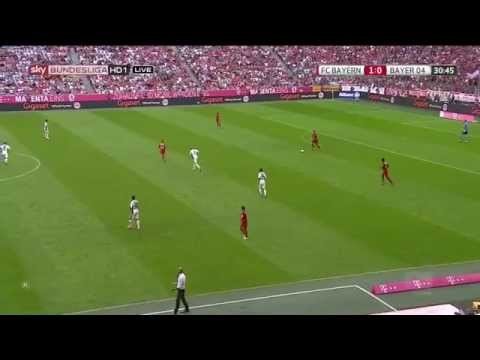
The Analyst’s first video (republished by another YouTube user), on Guardiola and Vidal.
The next day he woke up to a few hundred notifications. During the day, thousands more poured in – so many his phone gave out. The interest surprised him at first. He’d made the videos for his friends, tactics geeks like him. But he came to realize he was fulfilling a huge unmet need.
“I think many football fans want to know how the best coaches in the world think, what they’re trying to do on the pitch,” he said via Skype. “Or at least what they’re likely to be thinking.”
The evidence was in his inbox: the requests kept streaming in. Arsenal fans wanted to know why coach Arsène Wenger kept playing midfielder Francis Coquelin. His game was pretty unremarkable, after all. The Analyst knew why, and his short video on Coquelin, “The Unnoticed One,” proved another resounding success.
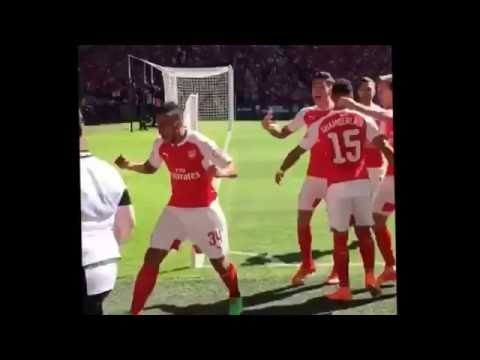
The Analyst’s third video takes a closer look at Coquelin’s play.
Not too simple, not too complicated
He believes he fills a hole in conventional sports commentary. As for the so-called tactical analysis on broadcast televison? “That’s usually just a recap of goals accompanied by some nonsense ‘analysis’ which hardly deserves the name,” he says. “It doesn’t explain anything much.” And written analyses? They can be very good but are notoriously long, difficult reads “with lots of graphics and arrows. Even for a trained tactician that can be a little wearying at times.”
The Analyst knew the power of video from experience at his club. If a coach used a flip chart to explain tactics, the players tuned out. But if he showed them a video, they took notice. “If you show them a short video to explain how a guy like [Paul] Pogba solves a certain situation, then you’ll have their attention.”
Evidently, things work the same way on Twitter. After the success of his first videos, he kept posting more, as time permitted. One shows how, in the Euro 2016 round of 16, Italy purposefully set “pressing traps” for Spain to compel a pass to a particular player. When the pass came, the trap slammed shut. The Italians fell on the player like predators, then launched a swift counterattack.
If something happens three times, “then it’s obviously been worked on” and merits a video
The Analyst wants to write about tactics, not incidents. If something happens once, he doesn’t take any notice – that’s an incident. If it happens twice, he starts paying attention – “I get suspicious,” he said. And if it happens three or more times, “then it’s obviously been worked on” and merits the effort of a video.
He usually only spots these patterns once he’s reviewing a game. He watches at 80% speed, he said, “because at full speed you miss things.” But sometimes he spots them during the match – like during last Saturday’s Italy-Germany quarterfinal. The German defense had assumed a formation that enabled them to quickly recapture the ball after losing it using the tactic of counterpressing, The Analyst said.
At halftime he posted this clip.
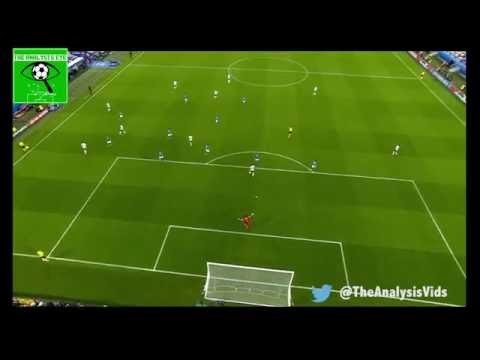
The Analyst’s clip of Germany attacking.
Thousands of soccer fans share his videos, which have had millions of views.
Of course, there’s the issue of copyright violation. Twitter temporarily took his account offline during Euro 2016 after TRT Media, the Turkish rightsholder, complained. Since then, he’s preceded every analysis with a disclaimer. “A follower advised me to do that,” he says. “I’m not a copyright expert, but I haven’t had any complaints since.”
Others have started doing similar work. One account that’s been posting an increasing number of similar videos is that of the Dutch tactics blog Catenaccio. Another popular Twitter analyst is István Beregi, a Hungarian psychology student.
In one photomontage, Beregi shows how important it is to receive the ball with your best foot. “How does receiving the ball affects [sic] decision-making?," he tweeted. The montage shows how the German winger Julian Draxler receives the ball with his right foot and gets into trouble. But when Draxler receives the ball with his left foot, the field is all his.
Soccer teams have taken notice of Beregi’s videos and sharp, witty tweets. He’s begun working as a part-time analyst for a semiprofessional Hungarian club and says he hopes to pursue a career as an analyst or coach.
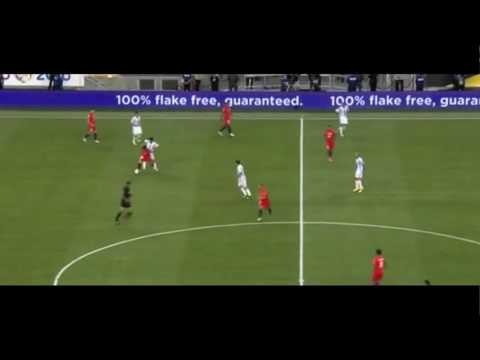
Here’s Dutch analyst @11tegen11 explaining ‘Gegenpressing’.
The Analyst already works in pro soccer. Specialist media companies ranging from the magazine FourFourTwo to the soccer data app Squawka have approached him about working together, he says. If he wanted, he could make money as a tactics whisperer. It’s no surprise; the format’s perfect for TV and major websites.
For now, though, he’s not pursuing it. “I didn’t have a plan in mind, and look what it’s brought me. For now, that’s my plan: not having a plan.”
—Translated from Dutch by Laura Martz and Erica Moore
More from The Correspondent:
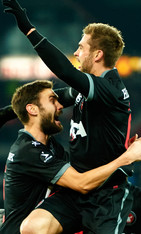 How data, not people, call the shots in Denmark
Little Danish club Midtjylland have put analytics squarely at the heart of their operations. Whether the task is player recruitment or match evaluation – it’s statistics first in Denmark. Could they be football’s answer to the Oakland A’s of Moneyball fame?
How data, not people, call the shots in Denmark
Little Danish club Midtjylland have put analytics squarely at the heart of their operations. Whether the task is player recruitment or match evaluation – it’s statistics first in Denmark. Could they be football’s answer to the Oakland A’s of Moneyball fame?
 Why notorious klutz Lex Immers is actually one of the nation’s best soccer players. Or was.
He is perhaps the most ridiculed soccer player in the Dutch Eredivisie: Lex Immers, on loan to Cardiff City in Wales. If we are to believe his many critics, the Feyenoord midfielder can’t pass, can’t control the ball, and can’t finish. But is this reputation deserved? Sander IJtsma and I looked at some basic metrics and found that no, Immers was decidedly not an amateur who somehow managed to con Feyenoord into buying him. His status this season is harder to assess, given his limited playing time. But it’s safe to say Immers will always be better than he looks.
Why notorious klutz Lex Immers is actually one of the nation’s best soccer players. Or was.
He is perhaps the most ridiculed soccer player in the Dutch Eredivisie: Lex Immers, on loan to Cardiff City in Wales. If we are to believe his many critics, the Feyenoord midfielder can’t pass, can’t control the ball, and can’t finish. But is this reputation deserved? Sander IJtsma and I looked at some basic metrics and found that no, Immers was decidedly not an amateur who somehow managed to con Feyenoord into buying him. His status this season is harder to assess, given his limited playing time. But it’s safe to say Immers will always be better than he looks.



